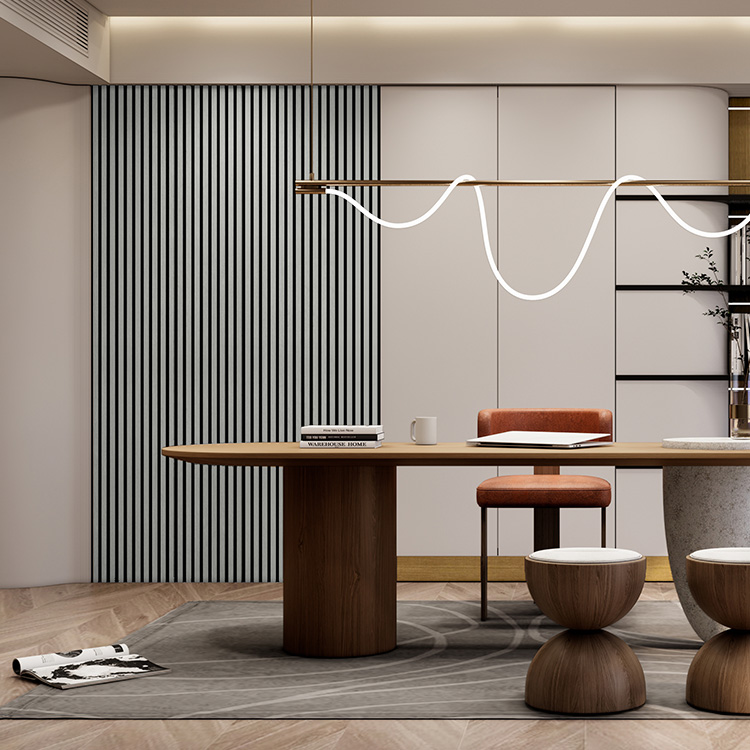When setting up a home theater, recording studio, or high-end listening room, speaker placement and room acoustics play a major role in sound quality. One common question is:
Should you put acoustic panels behind your speakers?
The short answer is—yes, but with purpose. Let’s explore why placing acoustic panels behind speakers can improve your listening experience, and how Guangdong Leeyin Acoustics can help you achieve professional results.
🎯 Why Place Acoustic Panels Behind Speakers?
Speakers emit sound waves in all directions—not just forward. The sound that bounces off the wall behind them can cause:
-
Early reflections, which distort clarity
-
Low-frequency build-up, leading to “boomy” bass
-
Phase interference, making music sound muddy
By placing acoustic panels behind your speakers, you can:
-
Absorb unwanted reflections
-
Control bass resonance
-
Improve overall sound definition and accuracy
📍 When It’s Most Effective
Placing panels behind speakers is particularly effective if:
-
Your speakers are close to the wall
-
You have a small or rectangular room
-
You use rear-ported speakers that push bass energy backward
-
Your goal is precision sound for mixing, mastering, or critical listening
🛠 What Type of Panels Work Best Behind Speakers?
While foam panels can help with high frequencies, low-frequency control often requires denser, thicker materials. This is where wood slat acoustic panels with felt backing shine:
-
Multi-frequency absorption – Controls highs, mids, and some bass
-
Stylish design – Turns your acoustic treatment into wall décor
-
Durable performance – Maintains effectiveness for 10+ years
At Guangdong Leeyin Acoustics, our wood slat wall panels combine premium PET felt with precision-engineered wood slats, offering both acoustic performance and visual elegance.
📏 Placement Tips for Maximum Effect
-
Directly behind each speaker – to target early reflections.
-
Centered with the tweeter height – ensures accurate high-frequency absorption.
-
Consider bass traps – if you have low-frequency issues, adding corner bass traps works well with behind-speaker panels.
🏭 Why Choose Guangdong Leeyin Acoustics
As China’s leading exporter of wood slat wall panels and acoustic panels, we have:
-
20,000㎡ modern production facility with advanced equipment
-
Strict international quality standards for consistent performance
-
Customizable solutions for homes, studios, offices, and commercial spaces
-
Eco-friendly materials with E0 and FSC certifications
Whether you’re a DIY enthusiast or a professional installer, we deliver world-class acoustic solutions for every project.


